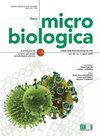BIC/FTC/TAF取得长期成功的药理学决定因素:效力、遗传屏障和宽恕。
IF 1
4区 医学
Q4 MICROBIOLOGY
New Microbiologica
Pub Date : 2024-12-01
引用次数: 0
摘要
在现代ART时代,长期治疗的成功应该被理解为HIVRNA抑制和以人为本的方法的结合,基于个人治疗史、GRT、过去的毒性和合并症。长期病毒学抑制的药理学决定因素是效力、高遗传屏障和高宽恕方案。这三个因素的相互作用和相对权重可以根据治疗的不同阶段而变化。本文章由计算机程序翻译,如有差异,请以英文原文为准。
Pharmacological determinants of BIC/FTC/TAF to achieve long term success: potency, genetic barrier and forgiveness.
In the modern ART era, long-term treatment success should be understood as a combination of HIVRNA suppression and a person-centered approach, based on individual therapeutic history, GRT, past toxicities, and comorbidities. The pharmacological determinants of long-term virological suppression are potency, high-genetic barrier, and high-forgiveness regimen. Interplays and relative weights of these three factors can vary according to the different stages of treatment.
求助全文
通过发布文献求助,成功后即可免费获取论文全文。
去求助
来源期刊

New Microbiologica
生物-微生物学
CiteScore
2.20
自引率
5.60%
发文量
40
审稿时长
6-12 weeks
期刊介绍:
The publication, diffusion and furtherance of research and study on all aspects of basic and clinical Microbiology and related fields are the chief aims of the journal.
 求助内容:
求助内容: 应助结果提醒方式:
应助结果提醒方式:


